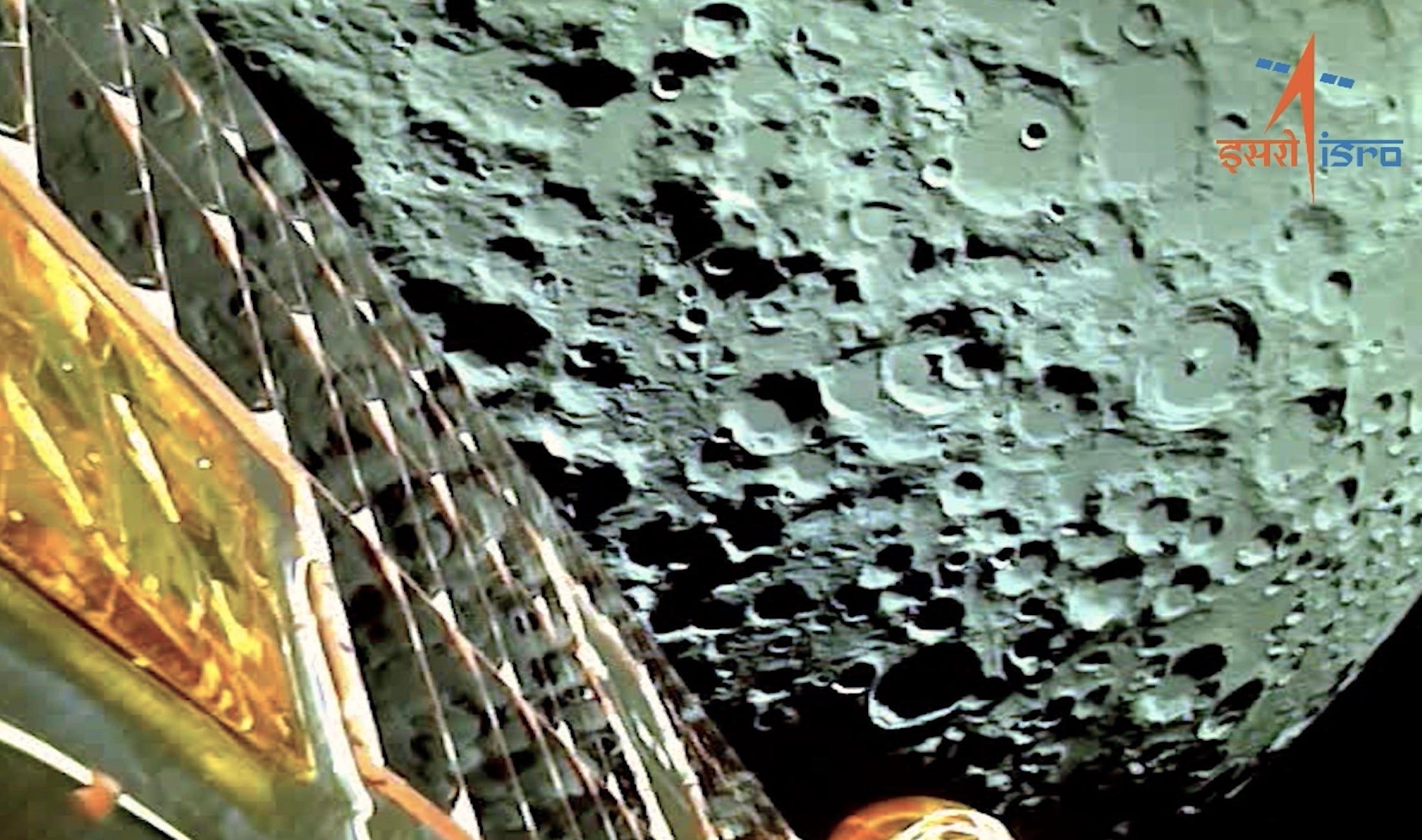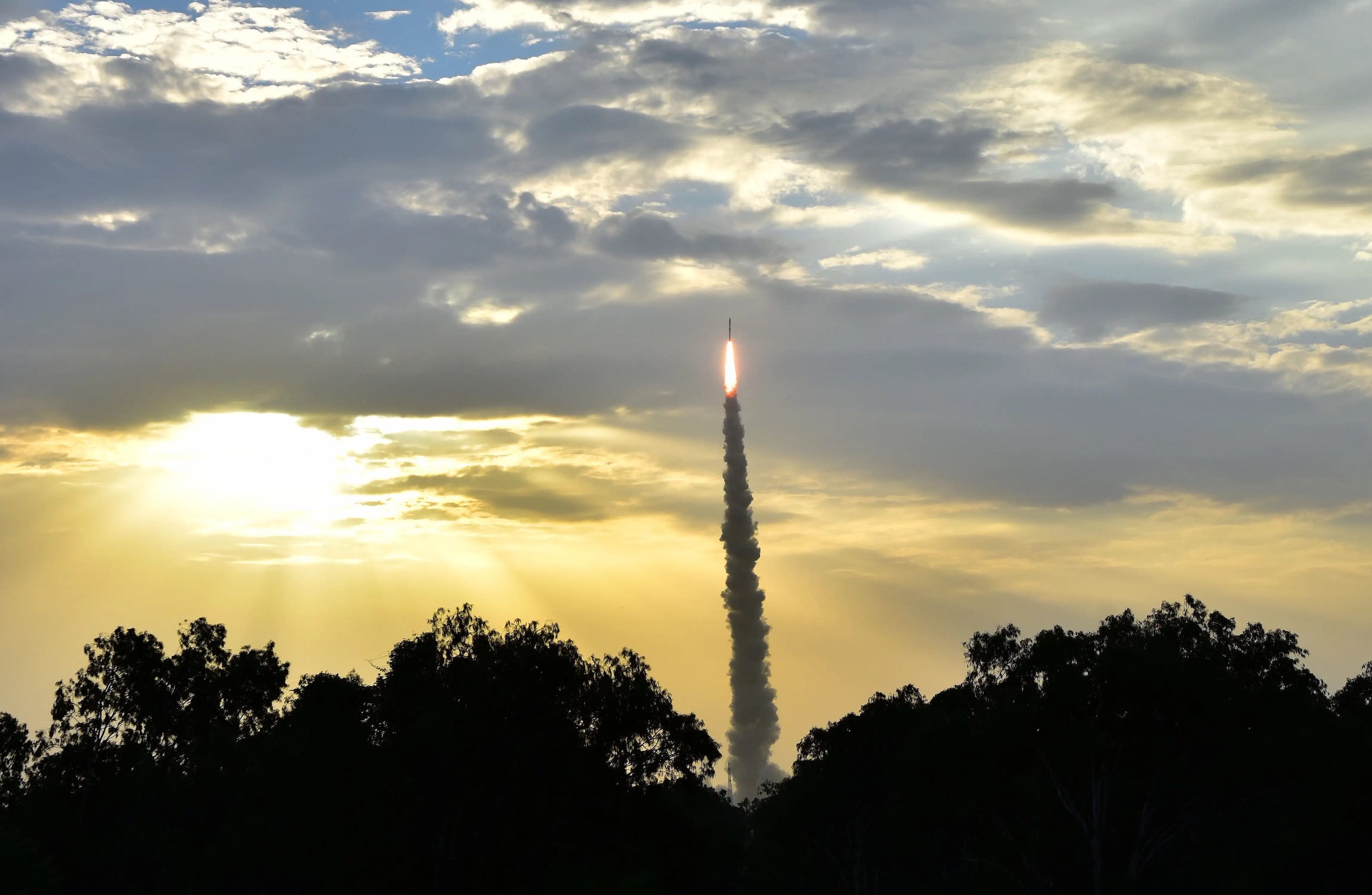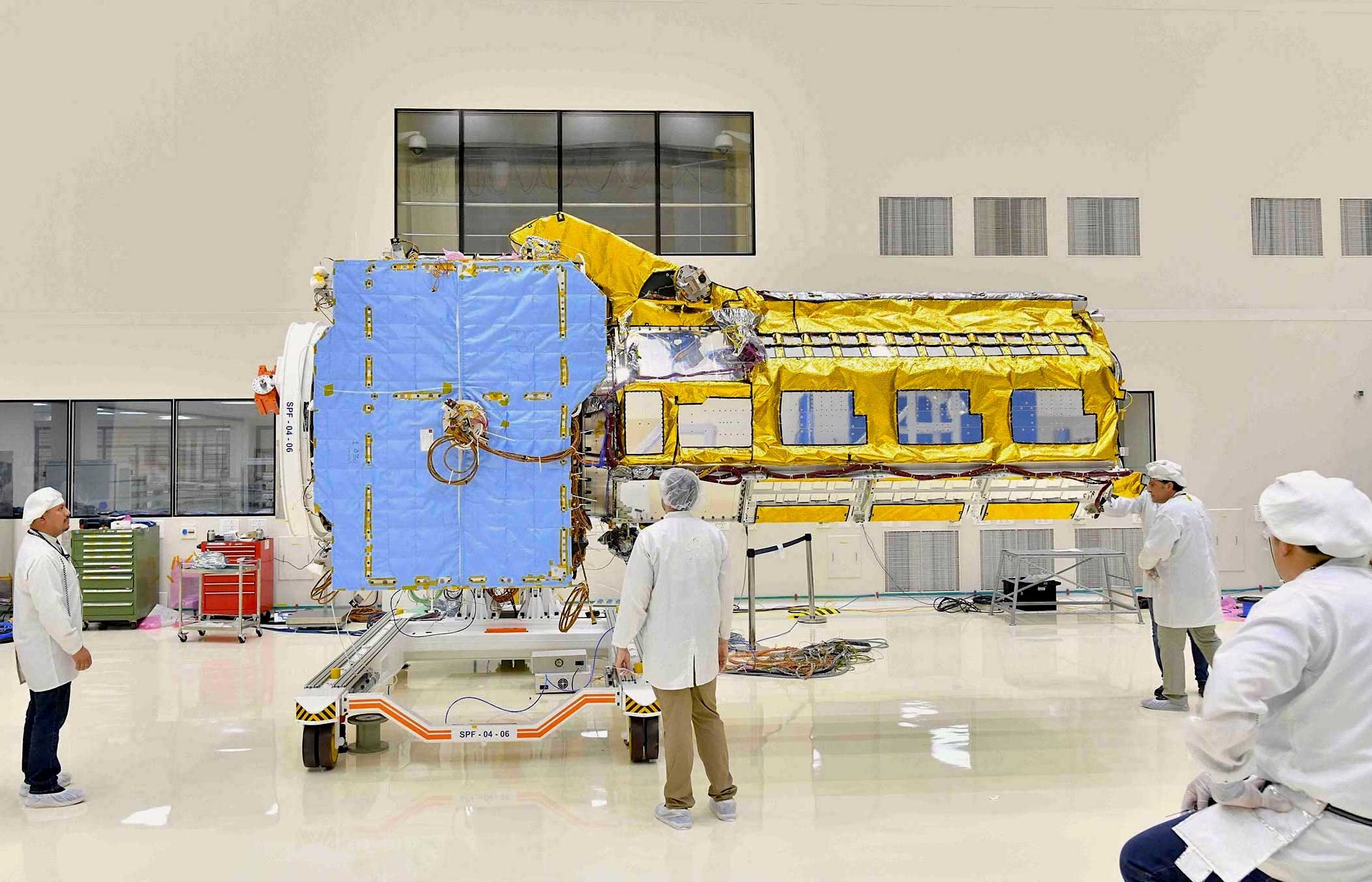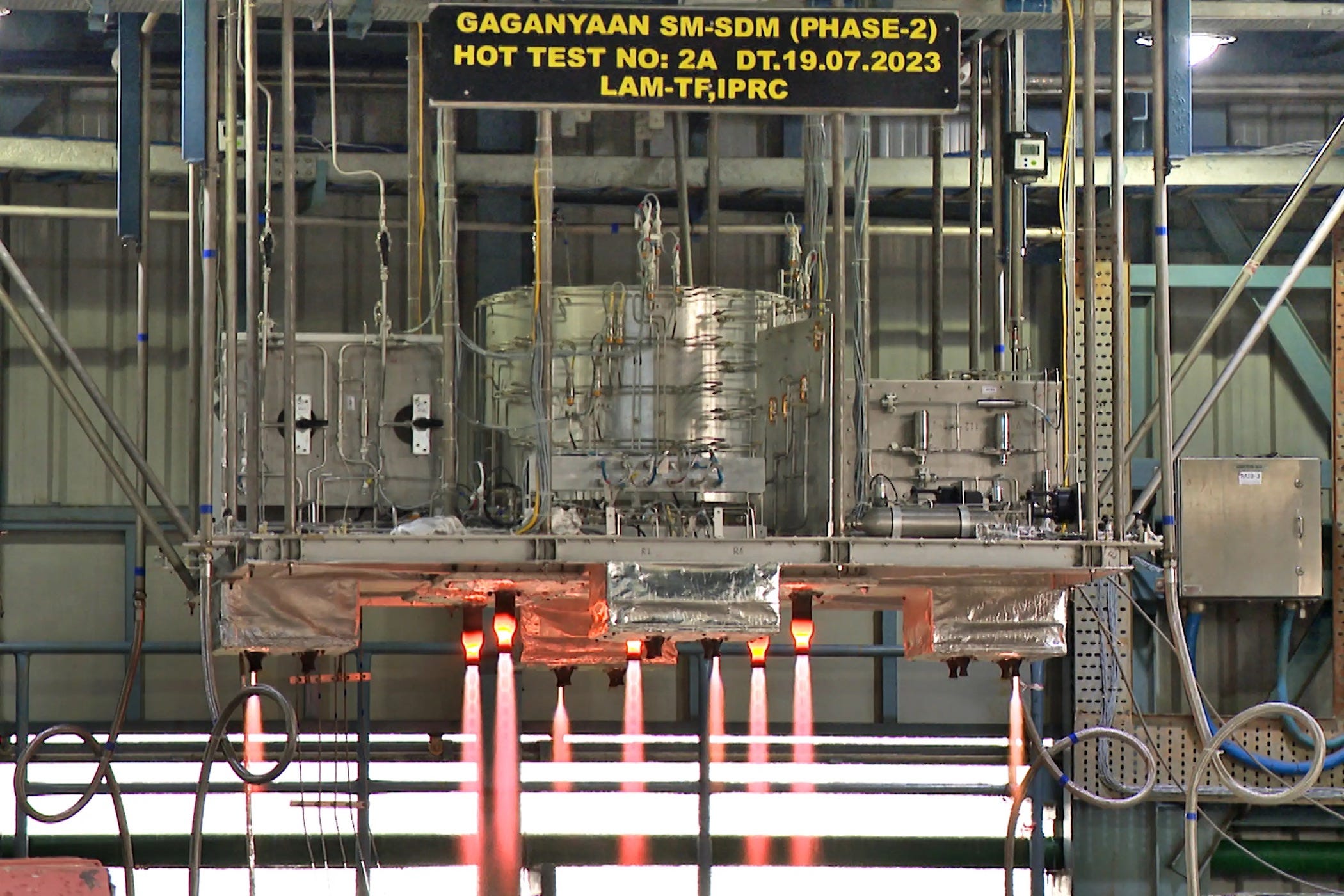Indian Space Progress #7: Moonbound Chandrayaan 3, Earthbound PSLV, engines for human spaceflight, and many mission updates
I’m honored that this Indian Space Progress monthly report series is now highlighted as a resource on the website of Spaceport SARABHAI, India’s first space think tank founded by an inspiring team of multidisciplinary experts many of whom I admire and have learnt from. 🚀
Chandrayaan 3’s journey to the Moon

Following ISRO Chandrayaan 3’s launch on July 14 and raising of its Earthbound orbit with multiple precisely timed engine burns, the Mooncraft achieved the desired orbit of 236 by 127,603 kilometers on July 25. Then, on August 1, Chandrayaan 3 fired its engines for ~30 minutes and put itself on a trajectory that intersects with Luna, thanks to its orbital parameters of 288 by 369,328 kilometers. A ~30-minute retro-firing on August 5, to decrease velocity and allow lunar gravity to substantially influence the craft, successfully put Chandrayaan 3 in orbit around our Moon at the intended 164 by 18,074 kilometers. This marks the third consecutive time ISRO has successfully put a spacecraft in lunar orbit, following Chandrayaan 1 and 2.
Another retro-burn on August 6 decreased Chandrayaan 3’s apolune to 4313 kilometers. One more firing on August 9 brought it down to 1437 kilometers. After two more such orbital size reductions, Chandrayaan 3 will enter a 100-kilometer circular polar orbit on August 17 to then prepare for its autonomous landing attempt on August 23 targeting the near-polar location of 69.37 S, 32.35 E.

Related new post: Will Chandrayaan 3 hop after landing?
PSLV launches more satellites for Singapore

On July 29, ISRO’s PSLV rocket successfully launched seven satellites for Singapore into the desired 535-kilometer circular Earth orbit as a commercial loft. The primary payload was DS-SAR, a 352-kilogram synthetic aperture radar (SAR) satellite purchased by the Singapore government from Israel Aerospace Industries. DS-SAR will complement Singapore’s indigenously built TeLEOS-2 SAR satellite, also launched by a PSLV this past April, by enhancing the coverage. PSLV’s July flight carried six secondary payloads, which comprise varying technology demonstrators from various organizations in Singapore.
After deploying the satellites, ISRO maneuvered PSLV’s fourth stage into a 300-kilometer circular orbit to let it re-enter and burn in our Earth’s atmosphere within two months. This avoids space debris as otherwise a PSLV fourth stage would typically take up to 25 years for re-entry. ISRO also mentioned passivating the fourth stage in the associated update:
In line with standard launch practices, the PS4 Stage was passivated after the re-orbiting process, as no further active propulsion need was anticipated. This passivation involved venting of all pressurized compartments (tanks/gas bottles) to release any stored energy or potential hazardous substances. By mitigating the possibility of pressurized compartment failures, the chance of fragmentation of the spent stage in orbit is minimized, thereby further reducing the creation of space debris.
In the meanwhile, the Australian Space Agency concluded that the object that found its way from the Indian Ocean to the Green Head beach in Western Australia in mid-July is most likely debris from a PSLV rocket’s third stage. ISRO confirmed the same, BBC News reports. An ISRO official said it would be up to Australia to decide what to do with the object. Well, the Western Australian government is considering storing it the state museum alongside debris from NASA’s Skylab station recovered in 1979.
Many thanks to the Takshashila Institution and SkyServe for sponsoring this month’s Indian Space Progress report.
More mission updates

- In October 2021, ISRO sent commands to its lunar polar circling Chandrayaan 2 orbiter to change its orbit slightly for avoiding an uncomfortably close approach of about 3 kilometers to NASA’s near-polar circling Lunar Reconnaissance Orbiter (LRO). In a May 2023 summary of India’s space activities, ISRO mentioned that on its request the LRO team postponed their spacecraft’s “Momentum Dumping” plan to avoid more such uncomfortably close conjunctions. In a new post on ISRO’s website providing an overview of active global lunar orbiters, which alluded to the importance of managing growing lunar traffic, ISRO also mentioned having commanded another Chandrayaan 2 orbiter maneuver for avoiding a close approach to South Korea’s first lunar orbiter KPLO.
- ISRO is targeting launch of the Aditya-L1 solar observatory in early September instead of August end on a PSLV rocket. Aditya-L1 will study the Sun’s surface, atmosphere, and its wind from the first Lagrangian point (L1) between the Sun and Earth, where the gravitational pull of these two bodies roughly balance. The L1 point is not a point as much as a small region in space, host to multiple solar science missions in the past, such as SOHO, ACE, WIND and DSCOVR. The spacecraft will have a unique ability to observe the Sun in multiple wavelengths while also measuring the solar magnetic field and the solar wind radiation using its in-situ instruments.
- ISRO and NASA continue making progress in readying the NASA-ISRO Synthetic Aperture Radar (NISAR) Earth observation satellite for its 2024 launch. In mid-June, ISRO joined the spacecraft’s co-developed bus to the body which hosts the two radar payloads: the L-band SAR from NASA JPL and the S-band SAR from ISRO. This joint project represents one of the world’s most advanced radar systems, one also among the most expensive at $1.5 billion. Over the course of its three-year primary mission post-launch in Q1 2024, NISAR will observe nearly our entire planet every 12 days to reveal ongoing changes in Earth’s crust, polar ice, climatic processes, biomass, agricultural regions, and more. The satellite will also be used for disaster management, whereby its data will be available only a few hours after observations.
Propulsion for human spaceflight coming through

As ISRO works towards the ambitious inaugural Gaganyaan mission to indigenously send humans to space, it continues qualifying technologies needed to achieve the feat. Following the recent qualification of the crew module’s propulsion system, which will be used for atmospheric descent and for attitude control during non-nominal ascent, ISRO successfully tested the service module’s wholly integrated liquid propulsion system for the first time on July 19. The system features five 440-newton engines and sixteen 100-newton reaction control thrusters. During Gaganyaan missions, it’s the service module that injects the astronauts in the crew module into orbit, circularizes to a 400-kilometer altitude, then maintains it for the mission length, and eventually provides the de-boost maneuver for the crew module before separating. ISRO conducted two more hot fire tests on July 26, and plans three more to be sure that the system works as desired in both nominal and several non-nominal cases.
Aside: Watch the engines glow red hot and then orange in this beautiful video.
As part of an ongoing series of sea recovery trials that began in February, ISRO and the Indian Navy completed another recovery test on July 20 with a representative crew module, which simulates the mass, center of gravity, outer dimensions, and externals of the actual Gaganyaan Crew Module. The various stages of recovery tests include attaching the recovery buoy, and towing, handling, and lifting of the crew module onto a ship deck. ISRO is using the experience gained from such trials to refine the Gaganyaan Recovery Training Plan document released internally in May.
The next milestone for Gaganyaan is an abort test with a full-scale crew module in August end or September, followed by another one end of year.
Private and commercial space updates
- In June 2022, a European Ariane 5 rocket launched GSAT-24, an ISRO-made $48 million communications satellite funded and owned by New Space India Limited (NSIL), a government company commercializing Indian space technologies. To that end, NSIL leased GSAT-24’s entire capacity to Tata Play for the latter’s Direct-to-Home consumer business. The satellite entered commercial operations only now after over a year, apparently due to exhaustive testing needed so far.
- NSIL has transferred the technology of ISRO’s IMS-1 small satellite bus to private firms Alpha Design Technologies and Dhruva Space, marking the beginning of such satellite tech transfers to the private Indian space industry as part of a broader national push for commercialization of space. ISRO has flown IMS-1 on three Earth observation missions.
- KaleidEO, SatSure’s subsidiary for Earth observation satellites, will utilize Bengaluru-based Astrogate’s promising 1Gbps laser communications system for the company’s upcoming four 100-kilogram multispectral satellites.
- Skyroot, which launched suborbital test mission Prarambh last November and became India’s first privately developed such rocket, is progressing towards an orbital launch of its Vikram-I rocket. On July 4, the company announced completing the carbon-fiber winding and curing of the rocket’s Stage-1 motor case. On June 21, Skyroot flight qualified its Raman-I engine, which will provide roll attitude control for Vikram-I. On July 21, the company successfully tested at an ISRO facility the first hot firing of its Raman-II engine, which will power Vikram-I’s fourth stage. A second, 10x longer test of 100 seconds followed on July 22, with more to follow to qualify Raman-II for orbital flight.
More Indian space
- On the occasion of Indian Prime Minister Narendra Modi’s visit to France on July 13–14, the two countries announced collaborating in various capacities across multiple initiatives. These include finalizing the upcoming joint climate monitoring satellite TRISHNA, conducting enhanced conjunction analysis to protect Indian and French satellites, aiding ISRO’s Gaganyaan human spaceflight program, co-working on reusable engines and commercial launches, and more.
- An ultraviolet telescope and spectrograph developed by the Indian Institute of Astrophysics to analyze interstellar material is facing export delays for its launch to China’s Tiangong space station due to general political tensions between the two countries. If and when the instrument flies, it could become the first international payload onboard Tiangong, which would be quite a feat considering how little China and India cooperate in space.
Reading menu
Even though women head significant projects at ISRO, the organization has never had a female director in any of its five [key] centers.
– India Space Congress shows the need to bridge gender gap / Mohana Basu
The New York Times continues to misrepresent Indian space
